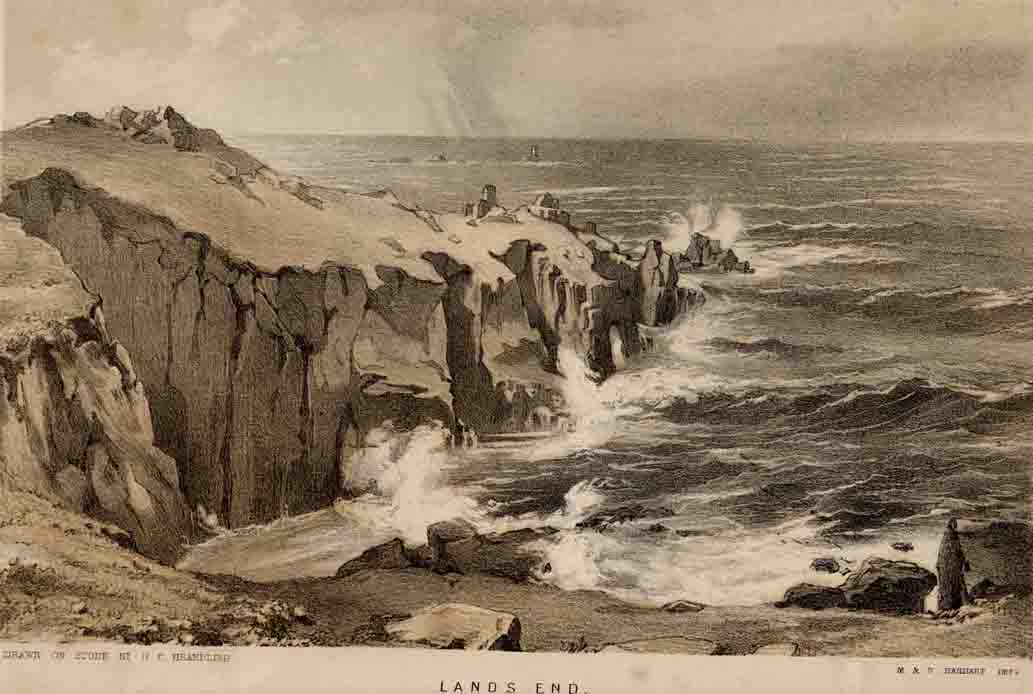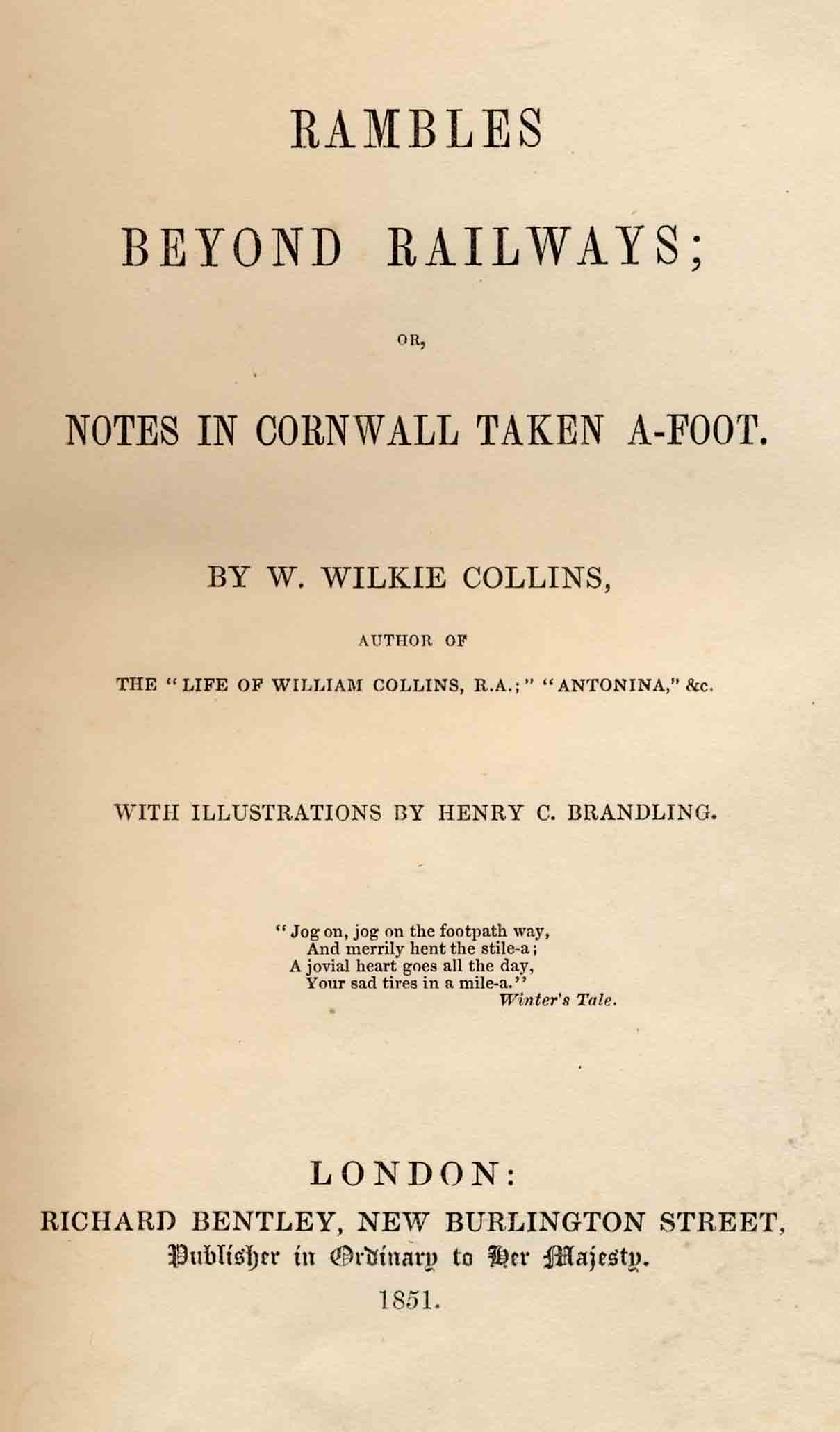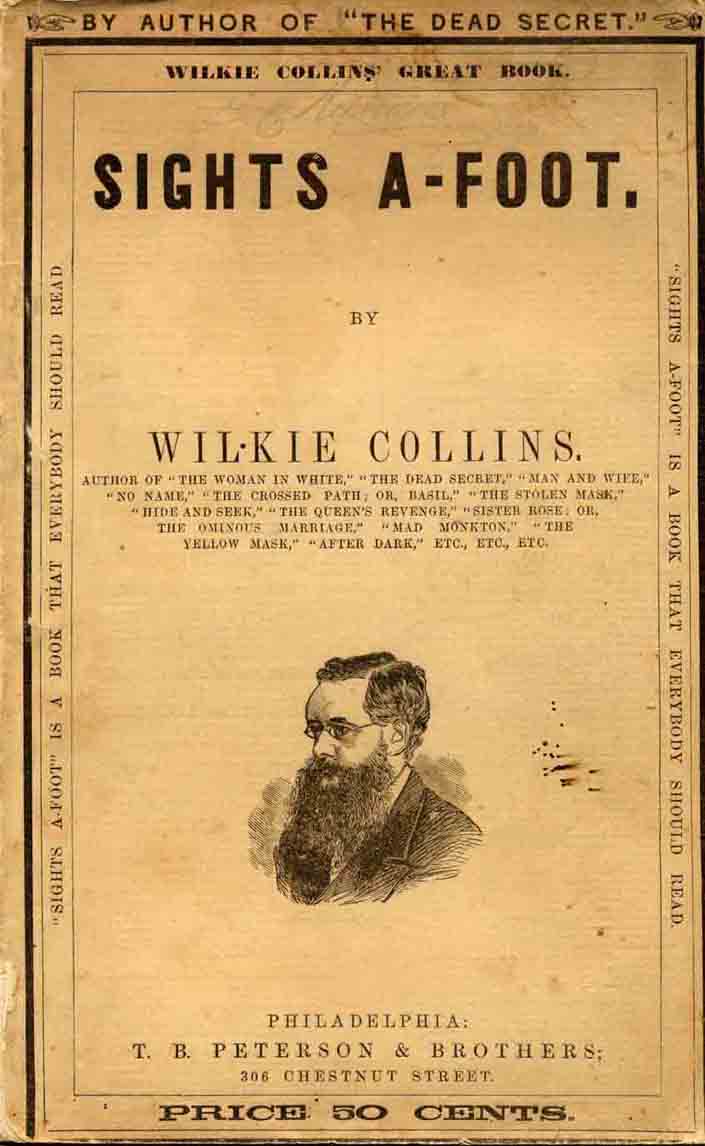RAMBLES BEYOND RAILWAYS: OR NOTES IN
CORNWALL TAKEN A-FOOT
'An unexplored region offered to the curiosity of the tourist'
[ Publishing History ] [ Front Page ]

Frontispiece of Lands End from the first edition in 1851
An illustrated travel book narrating Collins's 1850 walking tour of
Cornwall with his artist friend, Henry Brandling.
Published in 1851 and dedicated to the Duke of Northumberland. In
those days 'even the railway stops short at Plymouth' and the travellers have
to sail to their first destination at St Germains.

Title-page from the 1851 first edition
Collins found the locals hospitable, though inquisitive, and Rambles
became an amiable mixture of travelogue, vivid descriptive writing, Cornish
history and legend, and social observation.
The route of 234 miles took them along the south coast to the Lizard
and Penzance, returning through northern Cornwall to Tintagel and Launceston.
An appendix gives precise details of the itinerary, the miles walked
and the inns at which they stayed. Some
of these, such as the Ship at Looe, still exist.
Collins's notebook was filled with stories about the wreckers; the plague
of rats in Looe, solved by eating the rodents cooked with onions; royalist
supporters of Charles I at St Michael's Mount; the destruction and re-assembly
of the Loggan stone; and the graves of fishermen either drowned or frozen to
death. The legend of a
supernatural storm sinking a ship in an instant re-appears in 'Mad Monkton'
(1855). At Kynance Cove, Collins
was exhilarated by the Devil's Throat which inspired the description of
Mannion's death in Basil (1852). Inland, he saw the prehistoric remains
known as the Cheese-Wring and the Hurlers.
A highlight of the book is a long description of a visit to the
Botallack copper mine, where the workings
extended beneath the sea and the ghostly sound of the surf could be heard as
'a long, low, mysterious moaning.'
Collins also collected numerous statistics.
He noted the population was 341,269 at the last census, that nearly
five per cent of those in the Penzance area emigrated to Australia or New
Zealand in 1849, and that St Ives exported an average of 22,000 hogsheads of
pilchards, each containing up to 3,000 fish.
Rambles sold well and a
second edition was published the following year.
Collins added an 'advertisement', noting 'Since this work first
appeared, the all-conquering Railway has invaded Cornwall; and the title of my
book has become a misnomer already.'
Serialisation
Chapters 8 and 11 were published as 'The Pilchard Fishery on the Coast of
Cornwall'; 'A Visit to a Copper-Mine' in Harper's New Monthly Magazine,
April 1851 and 'Down a Cornish Copper Mine' in The Green Book for Boys,
(Hodder & Stoughton [1910].

Book Publication
First Edition
1 volume, Richard Bentley, London 1851.
Beige cloth, covers blocked in blind, spine lettered in gilt, yellow
end-papers printed with publishers' advertisements.
No half-title. Twelve
full-page tinted lithographs by Henry Brandling, printed separately.
Published 30 January 1851.
(viii) + 304 pp
Second edition
Published 9 January 1852. As
for the first except for minor differences in blocking of covers, cream
end-papers and darker illustrations.
New editions
1861 and 1863. Now dedicated to Henry C. Brandling. Omit two chapters and have only two black and white illustrations. Also contain 'The Cruise of the Tomtit'. Modern reprints 1948 and 1982.
US edition
As Sights-a-Foot, Philadelphia: Peterson, [1871].
[ Top of Page ] [ Main Works ] [ Front Page ]